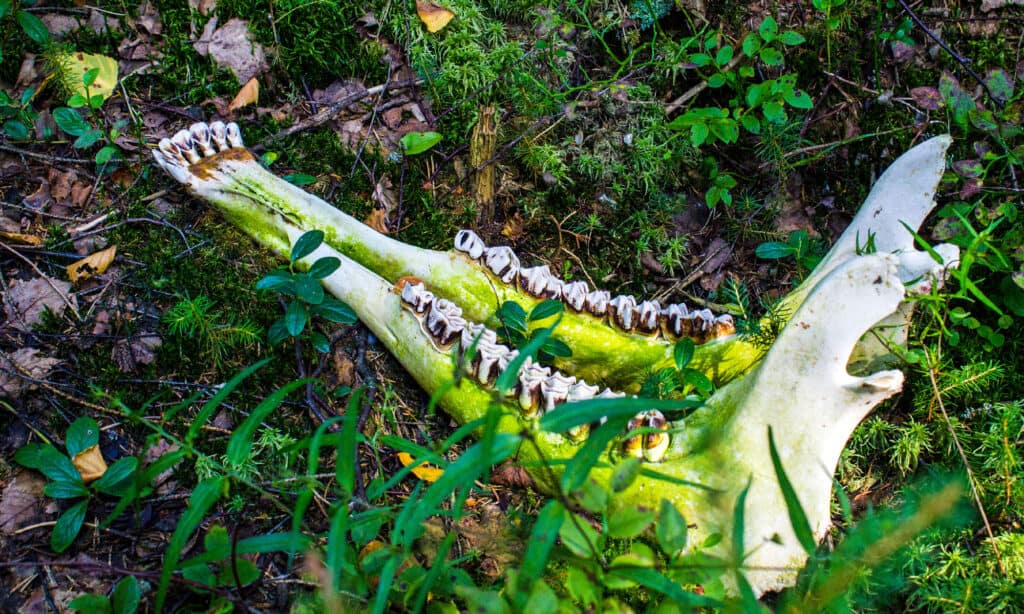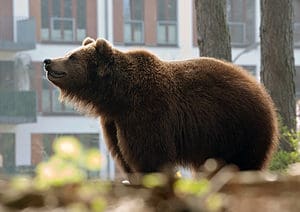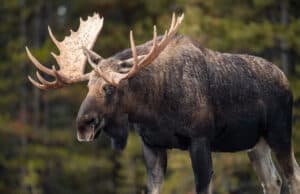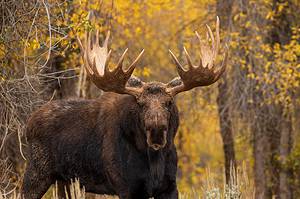The moose is the tallest mammal in North America and the largest species of deer. These enormous mammals, known as moose in America and elk in Europe and Asia, are scientifically known as “Alces alces.” They are classified as mammals and belong to the family Cervidae. The common name “moose” is derived from the Algonquian word “mo-swa” or “moosh,” possibly with some help from other tongues.
The colder northern regions of North America, Europe, and Asia, where there is a permanent snow cover, are home to moose. Since they do not sweat, they cannot survive in temperatures higher than 80 degrees. They produce a lot of body heat when digesting their meal, which accounts for their lack of sweat.
Each moose subspecies has unique geographic characteristics, sizes, antler traits, and fur. Their body sizes also vary depending on the geographical environment and diet. Despite their size, these animals are herbivorous and like to graze all day, eating up to 70 pounds of vegetation daily. This article discusses their teeth and every other fact there is to know about them.
How to Identify a Moose
Moose are enormous and powerful creatures. They are around six feet tall from hoof to shoulder, the height of an average adult male human. Their bodies are muscular, and their bones are prominent. Females typically weigh between 800 and 1200 pounds as adults, while male adults weigh between 1200 and 1600 pounds.
Moose have light brown to dark brown fur that blends well with their surroundings. Their appearance is even more distinctive from other deer family members due to their wide and flat antlers. These antlers measure between four and six feet wide when fully grown and are only found in males. These antlers begin to develop in late spring or the beginning of summer.
Do Moose Have Teeth?

Moose have 32 teeth.
©Mary Anne Love/Shutterstock.com
Like most animals, moose have teeth. However, their teeth differ from other animals because of their diet and preferred habitat. Moose eat a lot of bark, grasses, leaves, and shrubs. They are generalist herbivores that primarily consume aquatic plants, deciduous leaves, and forbs in the summer. During the winter, food sources become scarce, so they eat more twigs, bushes, and needles.
Like most mammals, moose give birth to their young alive. Baby moose, also called calves, are born with terrible eyesight but a great sense of smell and sound. For the first five months of their lives, moose calves exclusively drink their mother’s milk. These young ones cannot eat the same food as adults because of their underdeveloped teeth.
Adult Moose Teeth

Moose teeth are explicitly made for consuming plant matter and for grazing on shrubs and small trees.
©Mikhail Anikaev/Shutterstock.com
The moose’s head has an elongated form. This facilitates feeding techniques like stooping to get water and climbing trees for food. Moose teeth are explicitly made for consuming plant matter and for grazing on shrubs and small trees. Moose have essentially two sets of teeth. They have 32 teeth, including six incisors, two canines, 12 ridged molars, and 12 premolars. The incisors and the front teeth gather food, while the molars and premolars, often known as the cheek teeth, are used to chew and grind food. An empty gap along the jaw has no teeth between the incisors and the molars.
Incisors
Moose have a total of six incisors, and like other members of the deer family, they only have lower incisors. Because these animals only have six lower incisors, there is a wide gap between these teeth and their molars. The incisors are used to grasp and remove food, such as leaves, stems, and branches. The primary function of a moose’s incisors when feeding is to pull in and bite off twigs, while the back teeth are utilized to chew and ground food.
Molars
Moose have twice as many molars as they do incisors. These animals have 12 ridged molars that seem even more than they are because of the diastema between them and the incisors. Along with their premolars, these teeth aid the moose in chewing their meal. These ridges scrape against each other when the moose bites, providing the ideal chewing surface for the tough plants that make up the moose diet.
Premolars
Moose have the same number of premolars as molars, 12. The premolars are smaller than the molars but have the same irregular, ridged occlusal (chewing) surfaces. The diastema between the incisors and the molars also extends to the premolars. A moose will gather twigs and place them in this location, tilting its head sideways to remove all the leaves.
Aging Moose and Their Teeth

Moose teeth wear with age.
©iStock.com/wests
Moose endure severe tooth wear as they age. Their physical condition and the amount of food they can chew may worsen as their teeth become worn down. Their teeth also get looser with age, and twigs can become stuck between teeth and decay. Similar to humans, this can result in a severe infection of the jaw bone or palate, causing the moose’s flesh and bone to decay away until the animal dies of necrosis or starvation.
Moose develop their permanent adult teeth far more swiftly than other deer species. A moose’s permanent teeth are present by the time it is 1½ years old. Scientists have learned over time that a moose’s teeth are the only reliable source of information about its age. Scientists can precisely estimate a moose’s age by looking at the wear on its molars.
Up Next:
Sturgeon Teeth: Everything You Need To Know
Are Moose Dangerous? From Car Accidents to Defending their Territory
The Largest Moose In The World
The photo featured at the top of this post is © Michael Liggett/Shutterstock.com
Sources
- Section Hiker, Available here: https://sectionhiker.com/moose-jaw-a-real-one/
- , Available here: http://www.moosescoopsicecream.com/nh-moose-facts.html
- , Available here: http://www.cutemoose.net/moose_facts.htm
Thank you for reading! Have some feedback for us? Contact the AZ Animals editorial team.






